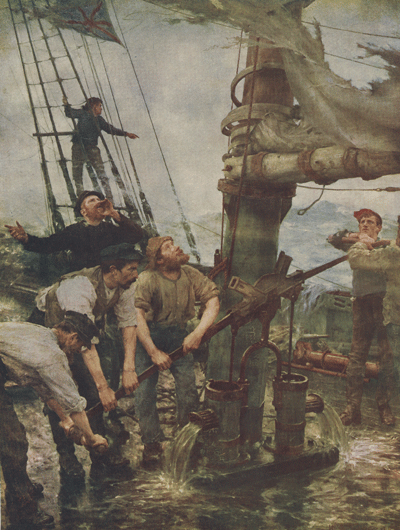
| Seamen, Sailors and Merchant Marines | |
| HOME - Johann Berend Petermann - Blanck Introduction - Occupations | |
|
Seamen, Sailors and Merchant Marines Johann Berend Petermann born in Ganderkesee, Germany in 1843 went to sea from 1859 to 1873. He married in Germany in 1879. The family immigrated to the New York area circa 1883. To see images of the ports of call Johann Berend visited and for more information on his life go to Johann Berend Petermann Henry Blanck, born in Lehe, Germany in 1847 went to sea from 1868 to 1871 before deserting ship in New York in 1871. See Henry Blanck The Erxmeyer brothers, Fredrick and Henry, born in Meinerdingen (Walsrode), Germany in 1843 and 1847 also went to sea. Fredrick from 1868 to 1870. Heinrich made one crossing from Bremen to New York in 1871 whereupon he deserted ship. Fredrich was on the same ship and deserted at the same time. See Henry Erxmeyer and Fredrich Erxmeyer
| |
 |
|
| Collection of Maggie Land Blanck
| |
 |
|
| Collection of Maggie Land Blanck Hercules and Omphale, by Henri Jacque Bource, Belioum artist. For three years Herculeus was a slave of Omphale, the queen of Lydia. While in her service Hercules was forced to humiliate himself by doing traditionally female tasks. | |
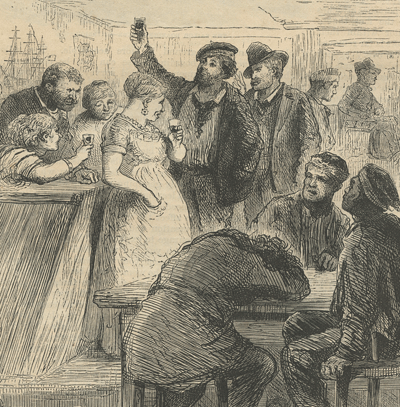 |
|
| Collection of Maggie Land Blanck, Harper's Monthly Magazine, July 1873, Jack Ashore JACK IN THE SAILOR'S BOARDING HOUSE The big vices of sailors, as seen by social reformers, were drink and women. Drink and/or women were sited as causes for the sailors to be "rolled" — that is robbed of their money while unconscious or asleep. | |
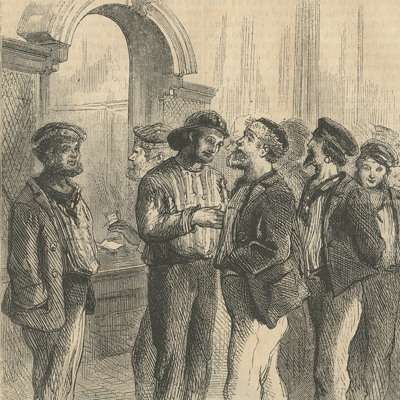 |
|
| Collection of Maggie Land Blanck, Harper's Monthly Magazine, July 1873, Jack Ashore THE SAVINGS BANCK | |
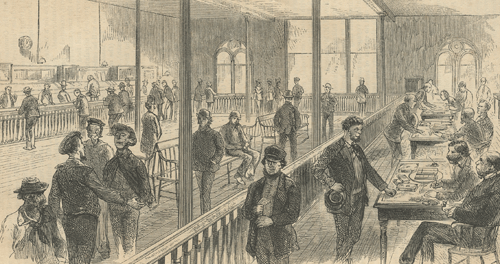 |
|
| Collection of Maggie Land Blanck, Harper's Monthly Magazine, July 1873, Jack Ashore "THE EXCHANGE" — SHIPPING CREWS, SIGNING ARTICLES AND PAYING OFF | |
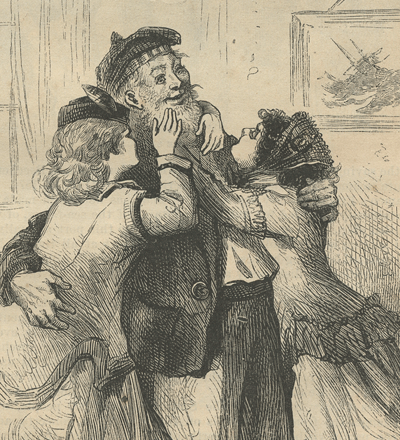 |
|
| Collection of Maggie Land Blanck, Harper's Monthly Magazine, July 1873, Jack Ashore AN OLD TAR'S WELCOME | |
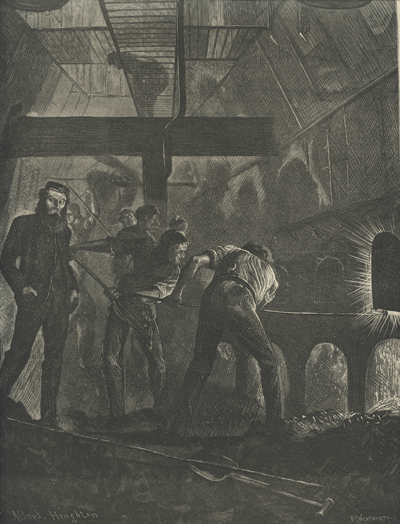 |
|
| Collection of Maggie Land Blanck,
Graphic America — the stoke hole, The Graphic, March 19, 1870 A combination of steam and sail ship were introduced after 1850. Later ships were entirely steamed powered. Steam was raised using coal furnaces. Stokers (also known as firemen) shoveled the coal into the furnaces. It was hot and dirty work. THE STEAMSHIP BOILER ROOM 1885 Every traveller on an ocean steam-ship has observed the firemen who, smut - covered and panting, climb up at intervals out of the boiler-room to the deck to get a breath of fresh air. Yet even the sight of them does not give a vivid idea of the heated dungeon where they work. The decent to it, always by ladder, is like the decent into a cavern. There are piles of coal, the hot boilers, the light the fires give, and only such fresh air as comes down the shaft. They work out of communication with everyone except the engineers, and they give less heed to calm or stormy weather than anybody else on board. They keep the fires constantly burning, but here their likeness to the vestal virgins ends, except in that the well-being of the passengers, if not of worshipers, depends on their vigilance. They have never been assigned to a place of honor or tradition equal to the tars who lead a more venturesome life above them; but since the day when steam-ships superseded sailing craft as a means of travel, the engineers and firemen have been incomparably more important persons than the sailors, and they are no whit less interesting. On the modern ocean steamer they outnumber the sailors sometimes two to one.See Bremen Sailors
| |
| For more images of ships at sea go to Immigration | |
| If you have any suggestions, corrections, information, copies of documents, or photos that you would like to share with this page, please contact me at maggie@maggieblanck.com |
| HOME |
| Blanck Introduction |
| Johann Berend Petermann At Sea |
| Occupations |
| For more information on the German Merchant Marine out to Bremen with images go to Bremen Sailors |
| Please feel free to link to this web page. You may use images on this web page provided that you give proper acknowledgement to this web page and include the same acknowledgments that I have made to the provenance of the image. Please be judicious. Please don't use all the images. You may quote up to seventy five words of my original text from this web page and use any cited quotes on this web page provided you give proper acknowledgement to this web page and include the same acknowledgments that I have made to the provenance of the information. Please do not cut and paste the whole page. You may NOT make use any of the images or information on this web page for your personal profit. You may NOT claim any content of this web page as your original idea. Thanks, Maggie |
| Copyright by Maggie Land Blanck - This page was created in 2004 - Latest update, August 2013 |